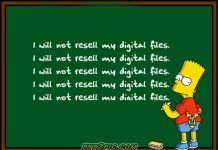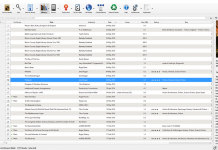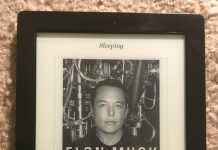(I’m a little belated in publishing this blog article, but better late than never!)
 Last month I attended, upon invitation, the Reading 2.0 conference in San Francisco. Several luminaries attended, known to e-bookers and the net savvy. They include, among others, Tim O’Reilly, Brewster Kahle, John Mark Ockerbloom, Cliff Lynch, Bill McCoy, and Distributed Proofreader’s own Juliet Sutherland.
Last month I attended, upon invitation, the Reading 2.0 conference in San Francisco. Several luminaries attended, known to e-bookers and the net savvy. They include, among others, Tim O’Reilly, Brewster Kahle, John Mark Ockerbloom, Cliff Lynch, Bill McCoy, and Distributed Proofreader’s own Juliet Sutherland.
 This conference was ably organized by Peter Brantley of the California Digital Library (Peter’s blog, his portrait is to the right.) I thank Peter for the honor and privilege in being invited.
This conference was ably organized by Peter Brantley of the California Digital Library (Peter’s blog, his portrait is to the right.) I thank Peter for the honor and privilege in being invited.
Tim O’Reilly, in his blog article, provides the best online summary of everyone’s talks upon which I cannot improve. (It is also a fairly complete attendee list since every attendee, with a couple exceptions, was asked to give a short talk.) My talk on DRM is summarized in Tim’s blog article. I guess I’ll hereafter be known as “UFO Jon.”
There were a lot of interesting ideas and perspectives presented at the conference. Perusing my essentially unreadable notes, a few items jump out as especially interesting (partial list):
-
During the followup discussion to Tim O’Reilly’s kickoff talk, someone (unfortunately I don’t recall who) mentioned the interesting observation that 5 to 7 words appearing on any selected page of some textual work are sufficient to uniquely identify that work. This has ramifications in the realm of permanent identifiers. (Of course, the words have to be interesting words, not words like “a” “and” “the” etc.)
-
Lorcan Dempsey’s talk included a discussion of the FRBR (PDF), which has intrigued me for several years as a way to catalog/organize online ebooks. FRBR (or what I like to term the “WEMI” system, short for “Work-Expression-Manifestation-Item”) is something which Project Gutenberg, for example, might consider embracing for organizing all the variants of particular Works.
-
Tim O’Reilly brought up his ideas for a “distributed annotation system,” of which OSoft already has a real-world implementation.
-
Chad Dickerson (of Yahoo) gave a talk on microformats, and the application of microformats specifically to improve accessibility (by adding more semantic meaning to chunks of text) was something I brought up which apparently had not been thought of before.
-
Bill McCoy’s talk was very interesting, and presaged what Adobe may be planning as David Rothman surmised yesterday. Bill looked at various “levels” of digital publications, where Level0 is “bits” (such as an image), Level1 is a fixed form presentation (such as PDF), Level2 is reflowable presentation, and Level3 is data (focusing on information, not presentation). Since my notes are fuzzy here, I hope Bill will provide a thorough summary of his talk to clarify any inaccuracies in what I just wrote.
-
And of course, I found interesting both John Mark Ockerbloom’s talk about use/preservation issues in online book communities, and Juliet Sutherland’s talk where she stressed that text content must go beyond just page images for it to be of the greatest use to people and to our culture.
In summary, it was an excellent and quite diverse conference, and it was an honor to meet the other attendees, some for the first time such as Tim O’Reilly. I’m hoping that Reading 2.0 will form the seed of something bigger — to become more than just a conference or series of conferences.
After the conference, when everyone dispersed, my wife and I enjoyed a dinner with John Mark and Juliet at the ThirstyBear Brewing Company. It was an enjoyable time, and I’m still working off the calories.
A few other notable blogs and comments about Reading 2.0

































